Hot off the presses:
Photos for No Apparent Reason (PFNAR) 2018
is published! Get your copy today –
makes a great gift for you, the photographer or the weirdly-humored in your life!
This brings the PFNAR collection to four books!
While you’re at it, COLLECT ALL FOUR – click here for the rest!
Throwback Tuesday Post (TBTP): Every Tuesday, I re-post a past post that I think is relevant and that you’ll enjoy.
This post was originally published on May 6, 2015, and updated on May 7, 2019.
In support of the world’s loss of part of the Notre Dame Cathedral this spring, I’m posting the next few Throwback Tuesday Posts from my last trip to the City of Light in 2015.
I’m sure all of you made my guacamole recipe for Cinco de Mayo this week! If not, you don’t have to wait for a Mexican holiday to enjoy it. Go get your avocados as soon as you finish reading this blog post!
Unrelated to Cinco de Mayo but still exciting, I spent the last week in Paris with my husband and another couple, Cyndie and Bram, our dear friends from Florida.
It was my fourth visit to the City of Light and amazing, as usual. We did the town, including the major sights and a dinner cruise on the Seine. Today I’ll tell you about a wonderful chapel dating from the 1400s, La Sainte-Chapelle.
Someone had recommended we see “The Holy Chapel”, as the name translates, because of its stained-glass windows. I wasn’t aware of the chapel before last week, but it was only a few steps away from Notre Dame Cathedral on Paris’ island, Île de la Cité (Island of the City).
At our hotel, we piled into perhaps the fourth or fifth taxi of the week. I must tell you that the cab drivers in Paris are as diverse as the tourists who mob the city regularly, and each one interesting and terrifying in a different way. This one spoke less English than I do French but was really trying.
However, he absolutely REFUSED to hear us say “Sainte-Chapelle”; instead, he heard, and maddeningly repeated, “Saint Germain” each time we said “Sainte-Chapelle”. Saint Germain is an interesting Parisian district with restaurants, boutique hotels, shops, cafes, museums and galleries. But it isn’t in the same place as Sainte-Chapelle. The dialog went like this:
One of us: “Sainte-Chapelle?”
Driver: “Sure. Saint Germain”
Another of us: “No, Sainte-Chapelle.”
Driver: “Yes. Saint Germain. Saint Germain.”
Us: “No, Sainte-CHAPELLE!”
Driver: “Oui. Saint Germain. Saint Germain.”
…and so on throughout the entire trip until we arrived in, you guessed it, Saint Germain! Finally, Cyndie thought to show him the name of the chapel on a printout she had.
Driver: “OH, you want Saint-Chapelle! Ok, that’s over there.” And we drove for another few blocks.
Fortunately it wasn’t far. We had him let us out near Notre Dame and the husbands got to tour the inside of the famous cathedral. Meanwhile, Cyndie chatted up a local gendarme for directions to the chapel. Presently we found ourselves in a line waiting at the entrance to, finally, Sainte-Chapelle (not Saint Germain).
The reason for the line was that all visitors have to go thru a security check. After the unpleasantness at Charlie Hebdo last year, I saw a lot more police and soldiers patrolling the city. The security here was especially tight because the chapel is inside the Palace of Justice complex.
A little Parisian history: In the first century BC the Parisii tribe settled this small island (Île de la Cité) in the middle of the Seine in what is now the center of Paris. From the 10th to the 14th Centuries there was a royal palace on the island. Sainte-Chapelle was built as the chapel of this palace. The other surviving part of the palace complex is the Conciergerie, a former prison (now museum) where Marie Antoinette spent her last 76 days. A newer palace building (1868) on the site is now the Palace of Justice, which is France’s center of judicial activity.
So, with all those judges, lawyers and legal and legislative types around, the X-ray machines are deemed necessary.
Once through security, we found ourselves in yet another line for tickets! Fortunately the lines moved fairly quickly. Also, waiting for tickets gave me a chance to examine the outside of the medieval chapel, surviving from the year 1248. She had me at gargoyles!

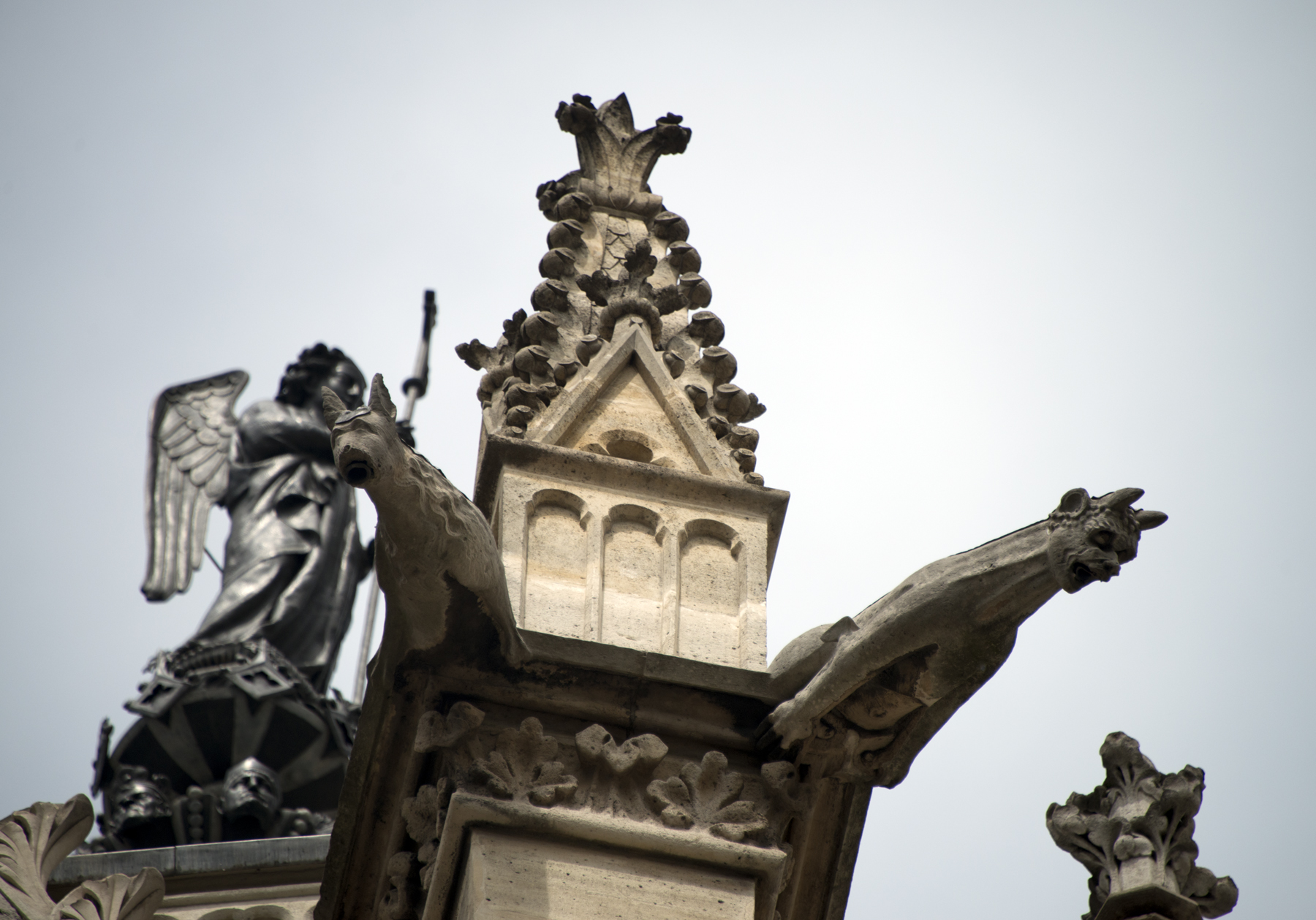



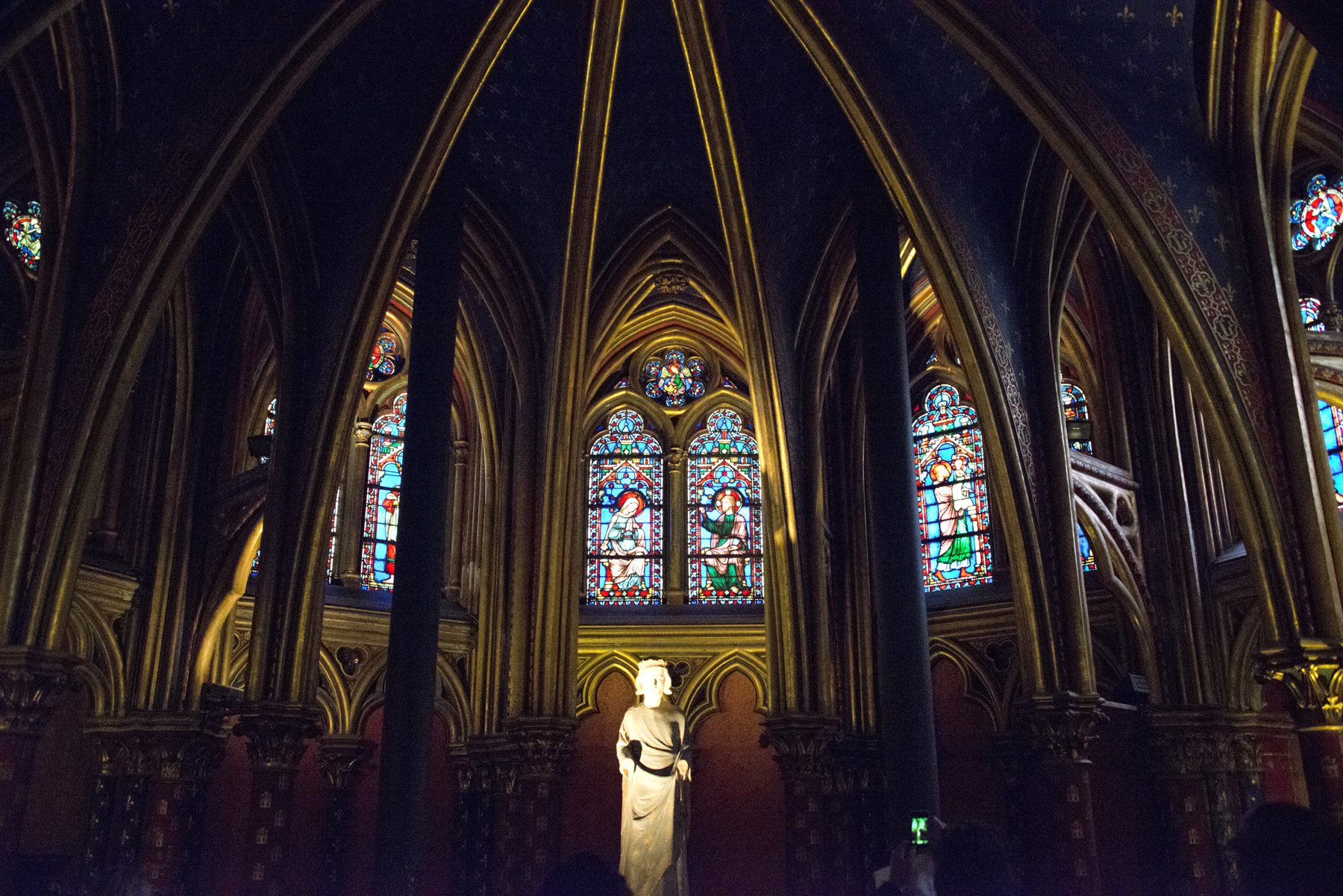
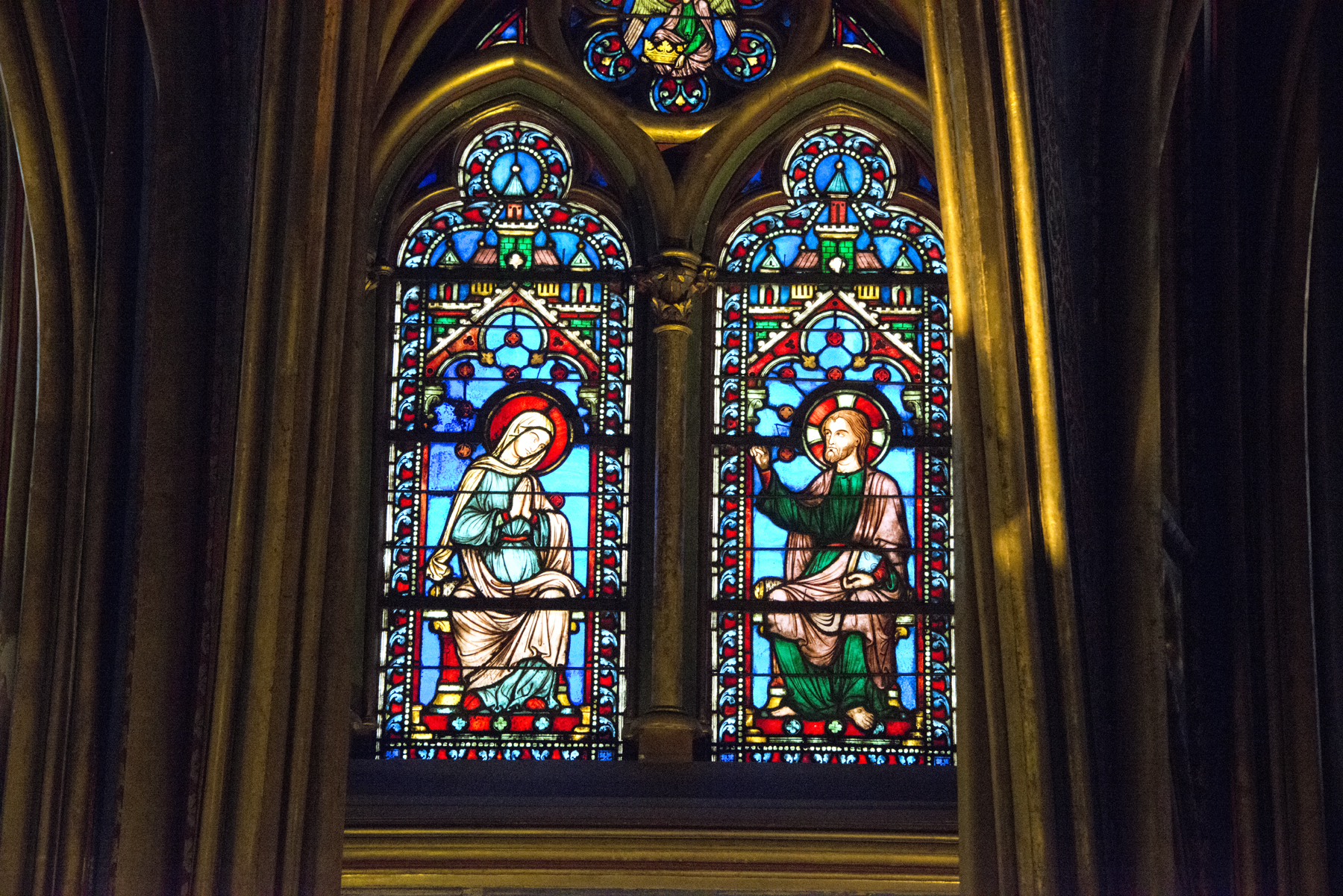







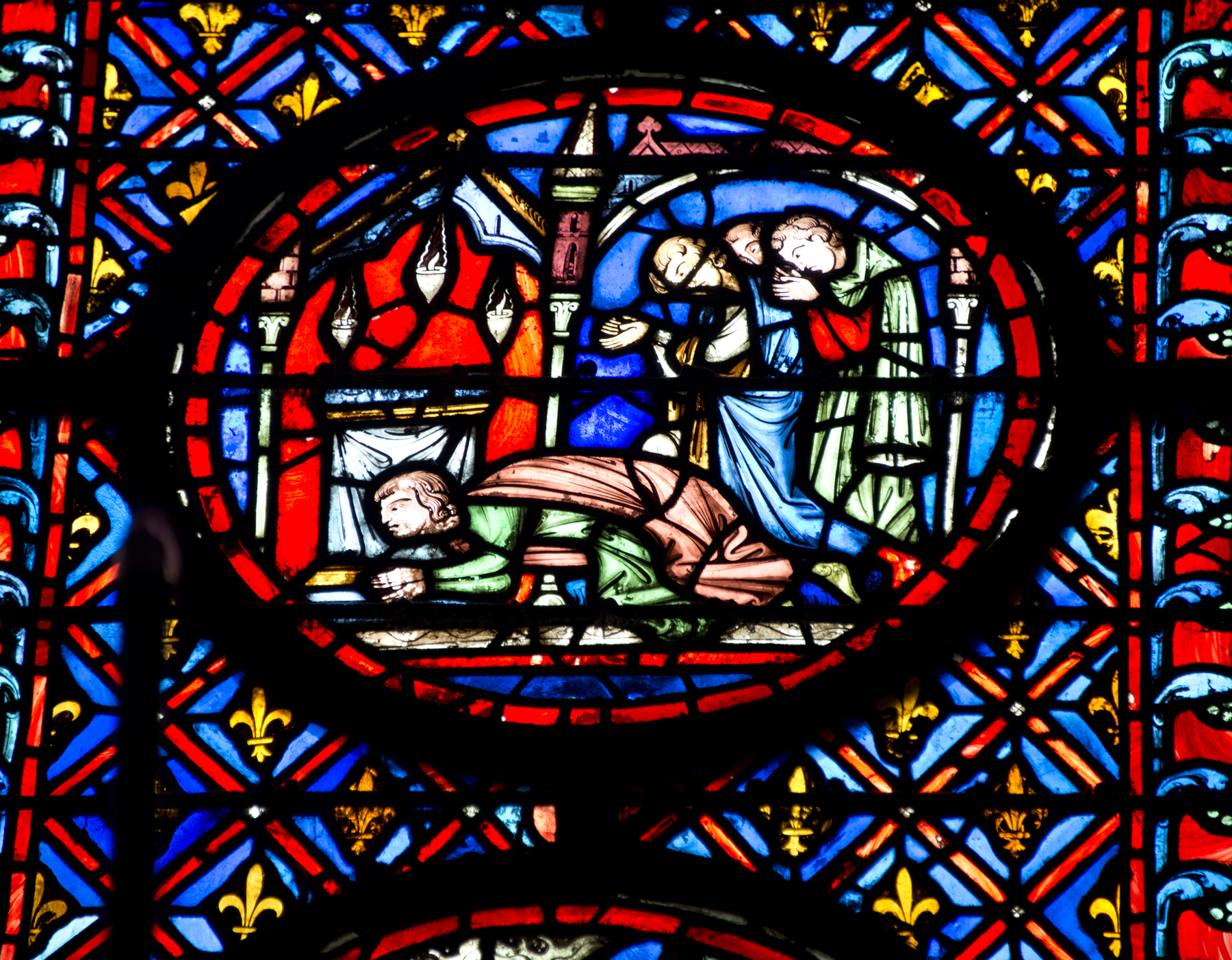
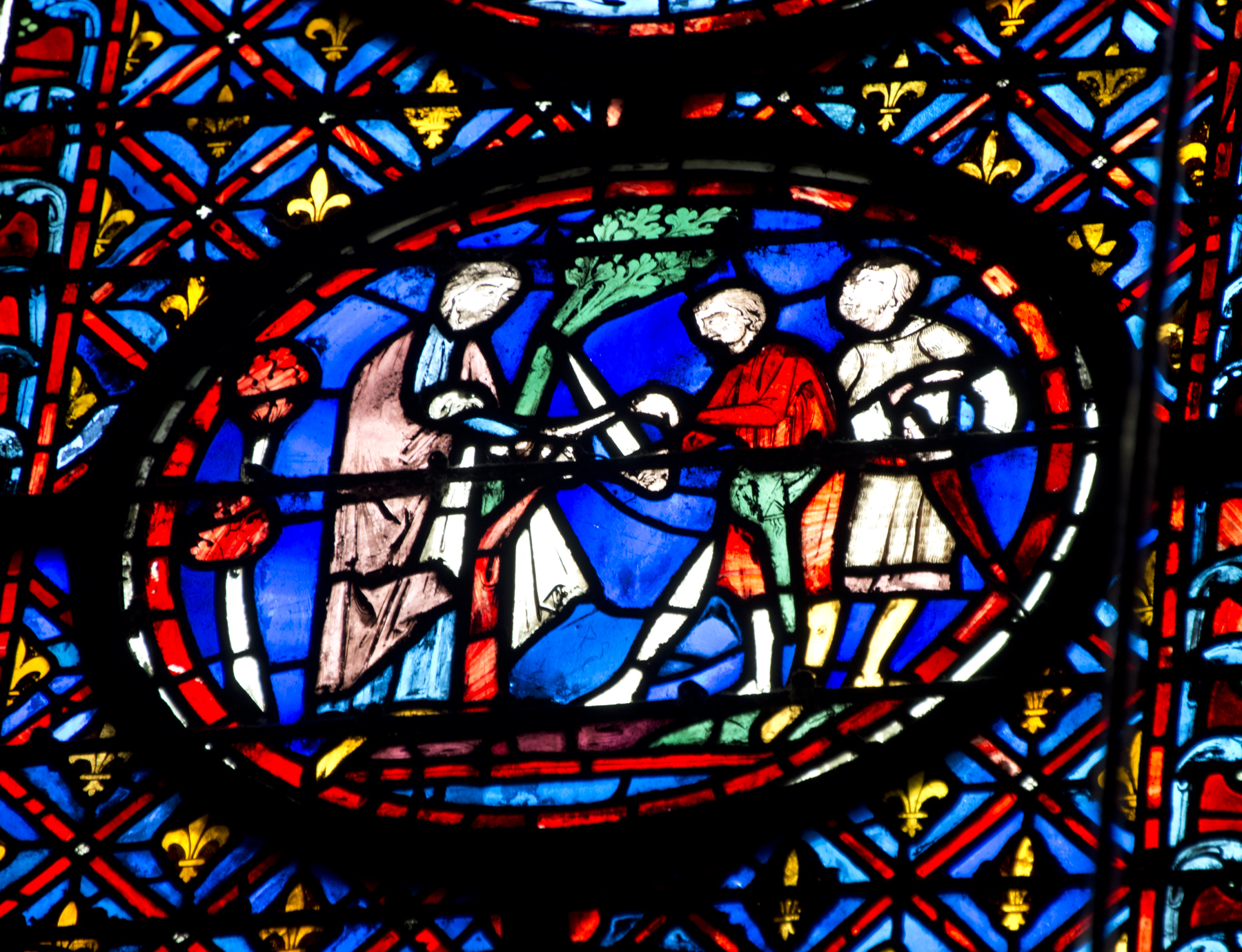


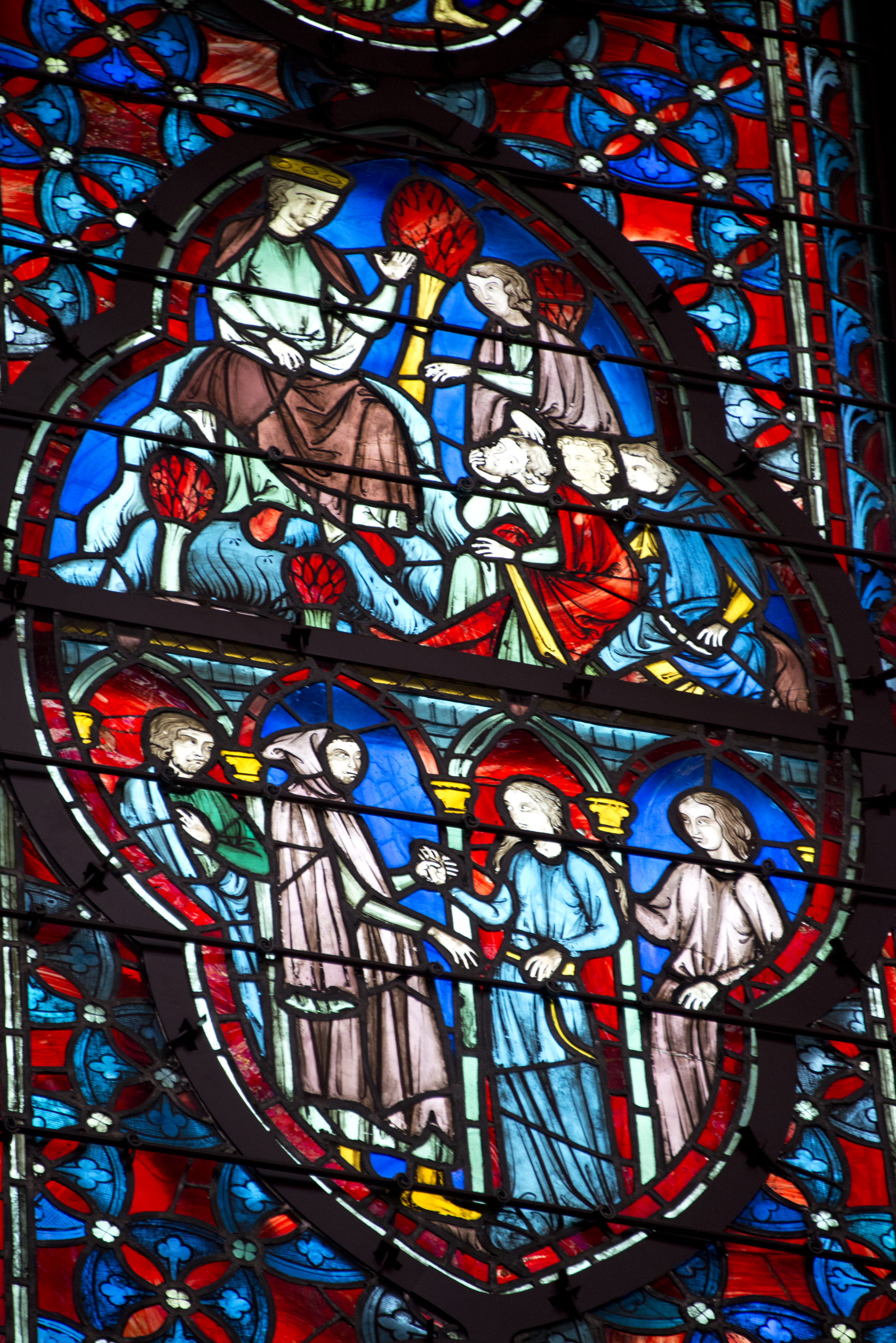
Of course, some of the panels are restorations, but about two-thirds are original, something that’s really hard to get my head around. Here in Germany most things had to be rebuilt after WWII. Paris did not suffer that fate, fortunately.
The crowning glory of the chapel is the western rose window. It depicts St. John’s prophecy of the Apocalypse:

That ladder on the bottom left of the photo above was part of an ongoing restoration project. Gloved technicians were cleaning and restoring the nearby wall.
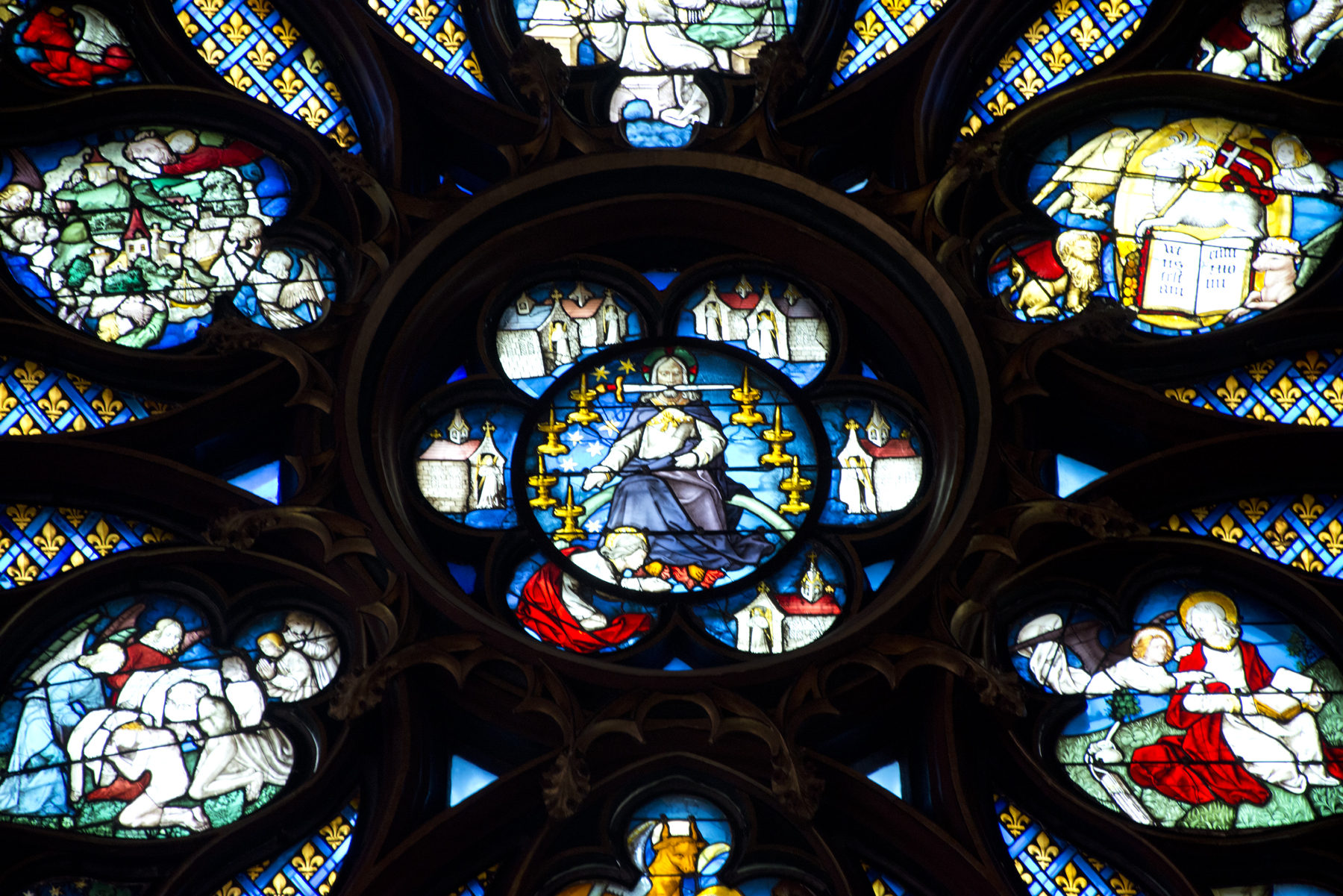
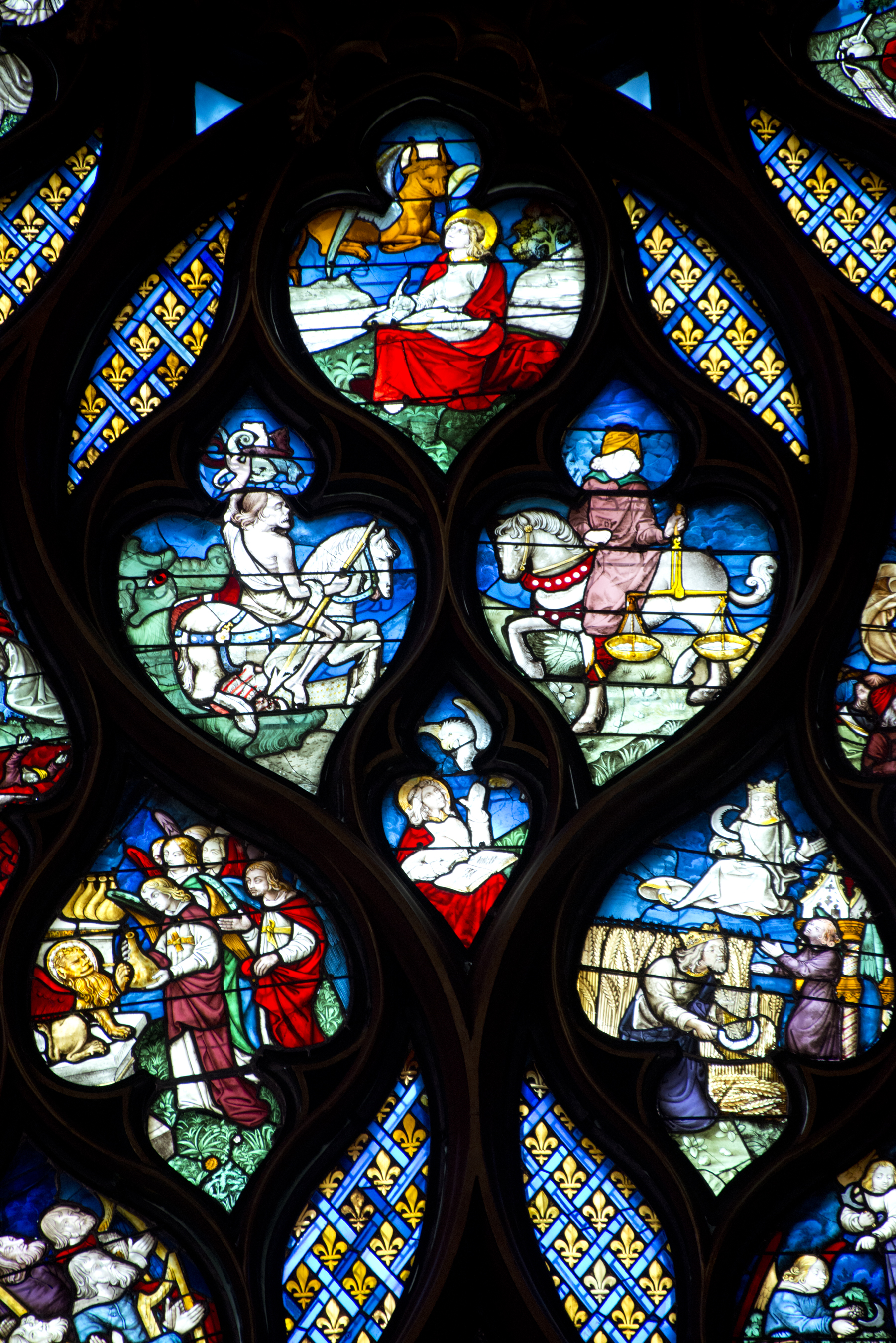

After our visit to the medieval chapel, it was time for lunch. Happily, I can report that Paris has no end of great eateries and we just had to cross the street to find a wonderful brasserie called Les Deux Palais, whose interior reminded me of an old-fashioned carousel and whose service and food I can highly recommend.
Here’s a parting shot of us two women in our souvenir berets atop the Eiffel Tower.

Photo for No Apparent Reason: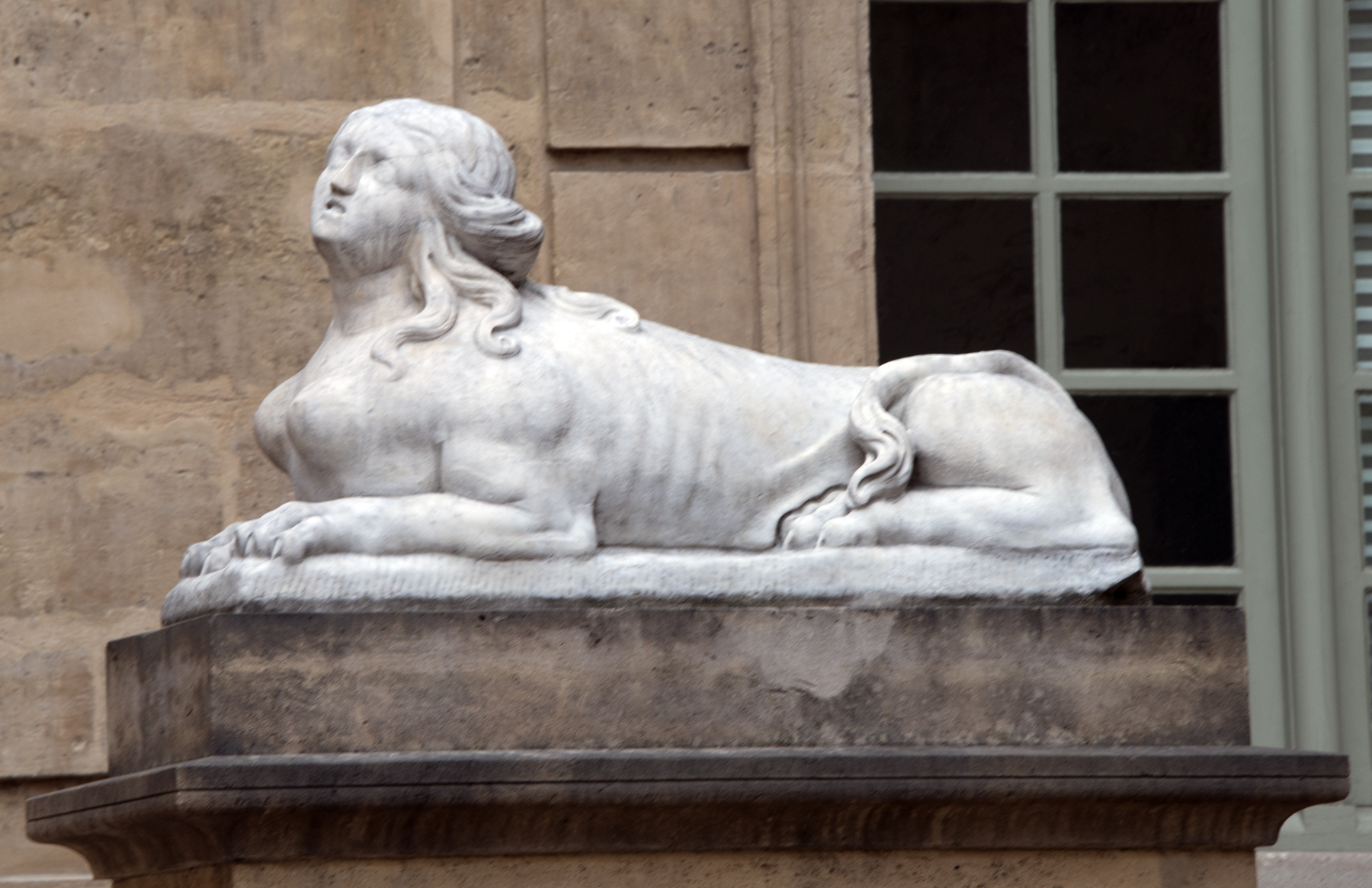

Your photos captured the uniqueness and beauty of the stained glass in your usual skillful way. I’m not sure I’ve seen such remarkable art any place else and this will always be a fond memory. Thanks for the trip back in time.